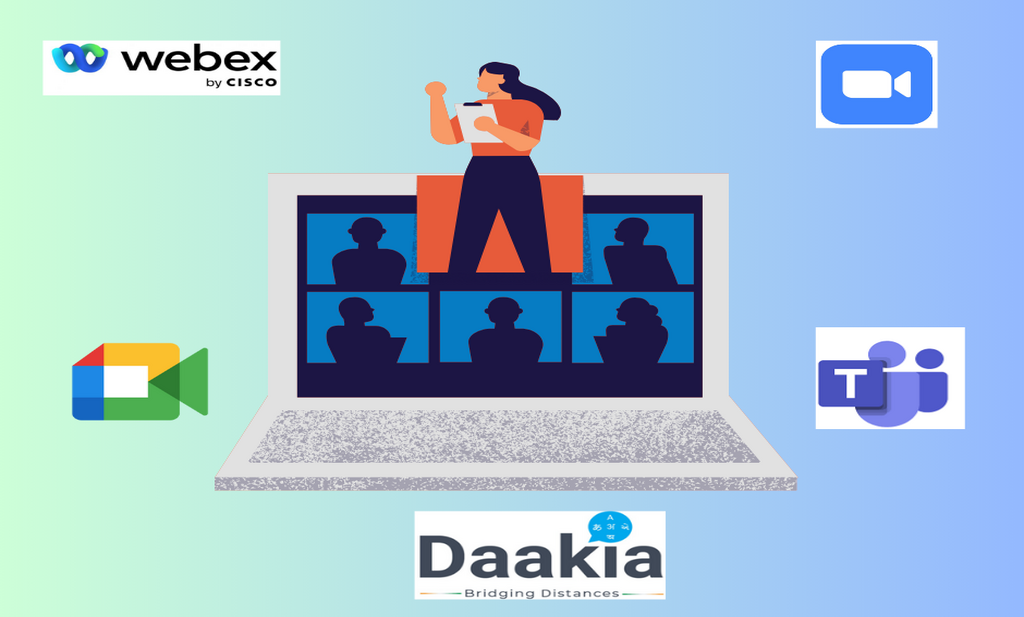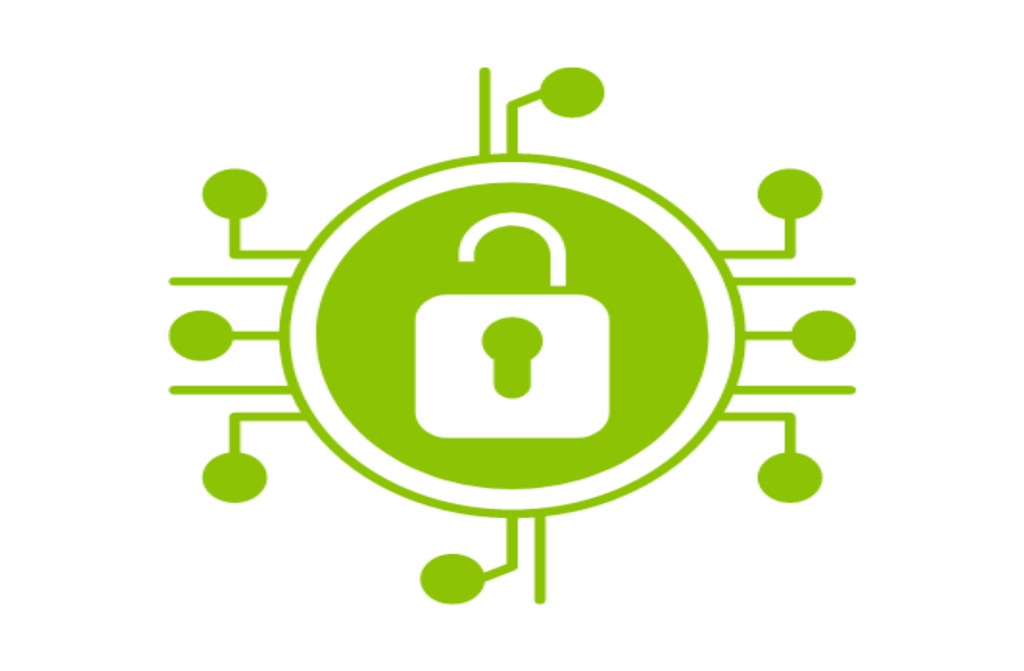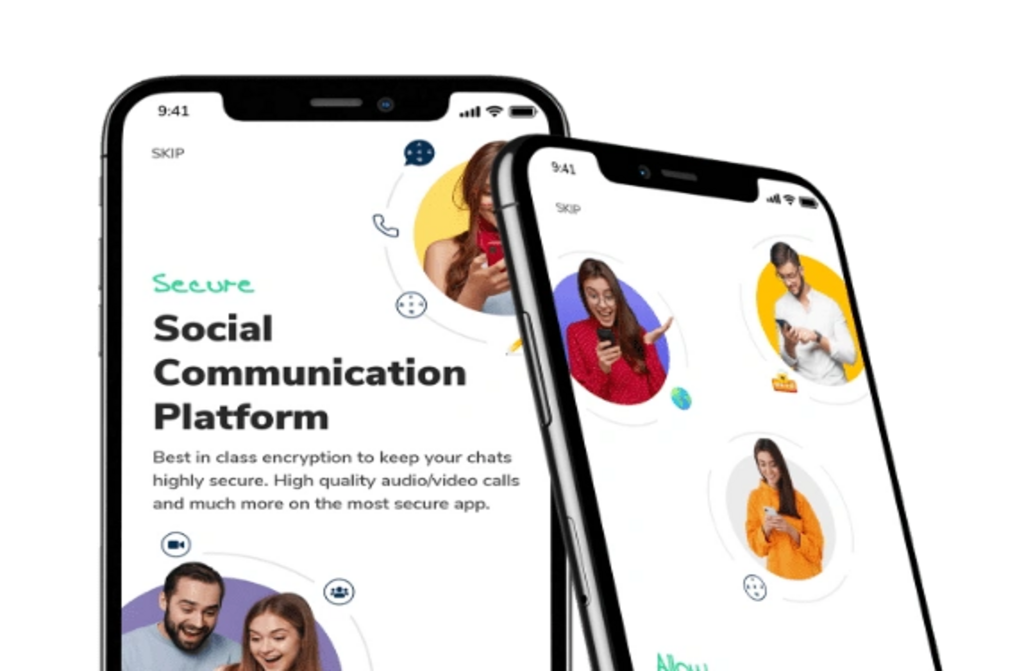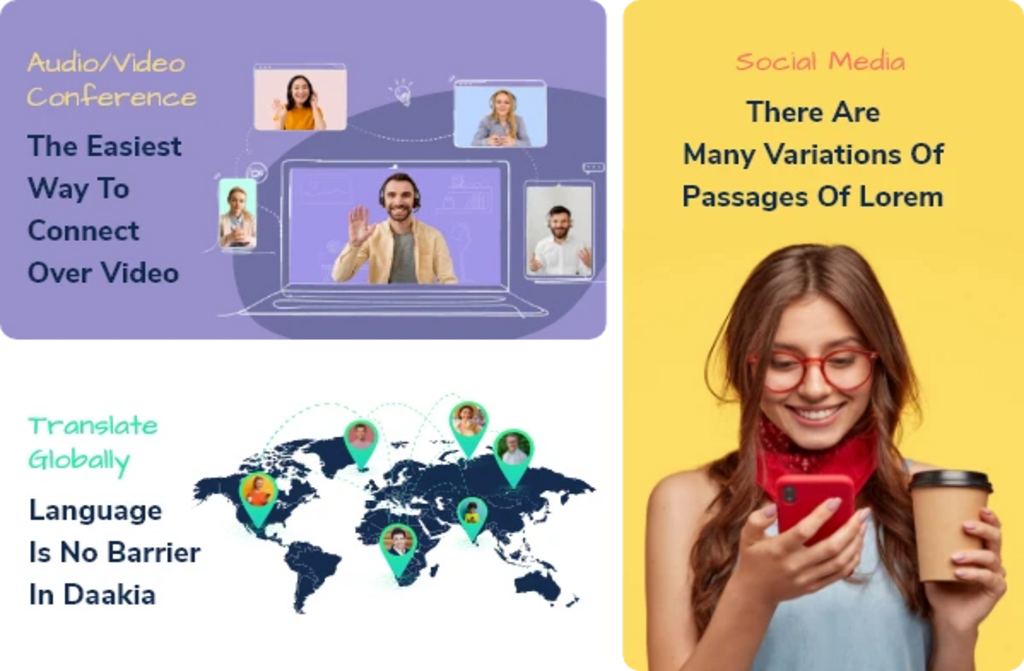Secure messaging solutions are today essential for maintaining privacy, securing sensitive information,…
Secure messaging solutions are today essential for maintaining privacy, securing sensitive information, and meeting regulatory needs in the networked digital world today. Companies are compelled to protect their intra- and extra-corporate communications because of increasing numbers of cyberattacks, stricter regulations, and an increased trend toward hybrid and remote work models. This article examines how secure messaging solutions are necessary for enhancing compliance and securing corporate correspondence.
The Increasing Need for Secure Communication
Unauthorized access, insider threats, and data breaches have become more common in all industries. Today, businesses operate in an environment where information security is mandated by law as well as a technological necessity. Inability to secure sensitive communication can lead to government fines, financial loss, damage to reputation, and a loss of customer confidence.
Secure messaging solutions become imperative in such a scenario. Besides end-to-end encryption of text, such systems often include phone and video calling, secure file sharing, and collaboration features that fulfill the needs of today’s business.
The Importance of Why Businesses need End-to-End Encryption
One of the most effective features of secure messaging solutions is end-to-end encryption. The sender and the receiver are the only ones who can view the communications due to this technology, making it impossible for third parties to intercept them.
There are three key reasons why businesses need end-to-end encryption:
- Confidentiality: Confidential client information, trade secrets, and sensitive business information are protected from unauthorized access.
- Compliance: Regulatory bodies (e.g., CCPA, GDPR, and HIPAA) have stringent measures to protect user and client information. Businesses can be compliant with these regulations through the implementation of end-to-end encryption.
- Control: Companies have full control over who gets to touch and access data, which helps in risk mitigation and management.
How Encryption Protects Business Communication
Encryption converts readable data into a coded format that only authorized users can decipher. Here’s how encryption protects business communication:
- Data Integrity: Ensures that messages are not altered or tampered with during transmission.
- Authentication: Confirms the identity of users, ensuring that communications are sent and received by the intended parties.
- Secure Storage: Even if stored data is compromised, encryption makes it unreadable to attackers.
- Risk Reduction: Lowers the chances of internal and external breaches by making it significantly harder for attackers to extract useful information.
By integrating secure messaging solutions, businesses not only protect their internal communication but also safeguard their external exchanges with clients, partners, and vendors.
How Encryption Protects Business Communication
Encryption converts readable data into a coded form that is only accessible to authentic users.
The following are some of the ways encryption protects business communication:
- Data Integrity: Ensures messages are not altered or manipulated during transmission.
- Authentication: Authenticates users to ensure the right individuals are sending and receiving communications.
- Secure Storage: Even if compromised, encryption makes data worthless to hackers.
- Risk reduction: It makes both internal and external breaches less likely by making it much harder for attackers to access critical data.
By implementing secure messaging solutions, companies can secure their internal and external communications with customers, partners, and suppliers.
Best Encrypted Messaging Apps for Business
It is crucial to select the best encrypted messaging apps for business, considering the prevalence of communication mechanisms. The choices below are best known for boasting strong security aspects:
- Daakia: A high-functioning, enterprise-grade collaboration platform with multiple language support, real-time messaging, and stringent encryption.
- Signal: Signal is most often utilized for private messaging and is best known for its clean UI and stringent end-to-end encryption.
- Wire: Built for businesses, Wire offers file sharing, conferencing, and end-to-end encrypted group conversations.
- Microsoft Teams (encrypted): Enhanced encryption features provide secure business collaboration via calls and documents.
- Slack (Enterprise Grid): Offers additional security measures and encryption for large enterprises.
Your unique needs—whether they are scalability, user interface, regulatory readiness, or extra collaboration tools—will determine which platform is best for you.
Secure Video Conferencing for Business Meetings
Video conferencing is one of the most important tools employed by contemporary businesses to connect stakeholders, customers, and remote employees. if the platform is not secure, this dependence exposes businesses to privacy and security risks.
- Secure video conferencing for business meetings includes
- Encrypted video calls from start to finish to prevent interception.
- Access management features, such as role-based access and waiting rooms.
- Encryption and recording protection for cloud storage to ensure the confidentiality of data gathered after meetings.
- Real-time transcription and multilingual captions to support different teams while maintaining accessibility and compliance.
Daakia, for example, integrates all these features under one umbrella, enabling companies to hold secure, multilingual, and collaborative meetings with ease.
Advantages of End-to-End Encryption for Business
Let’s discuss the more comprehensive benefits of end-to-end encryption for businesses:
- Compliance with Laws: Helps in meeting legal obligations under global data protection laws.
- Improved Client Trust: Credibility among clients and stakeholders is enhanced by demonstrating a commitment to data security.
- Cyberattack Protection: Lowers the risks of ransomware, phishing, and data hijacking.
- Business Continuity: Reduces disruptions caused by data loss and security incidents.
- Operational Efficiency: Gives employees the liberty to communicate and collaborate without worrying about data exposure.
Encouraging a Secure Communication Culture
The initial step is the adoption of secure messaging solutions. Organizations also must develop a culture that respects safe communication:
- Employee Training: Educate employees on identifying phishing attempts and how to send messages tactfully via secure channels.
- Access Management: Implement strict identity verification processes and user authorizations.
- Regular Audits: Review communication logs, encryption levels, and policy adherence on a regular basis.
The Road Ahead
Secure messaging solutions are going to continue evolving as businesses expand and adapt to new digital norms. The adoption of AI-based threat detection, advancements in quantum-resistant cryptography, and tighter international data security regulations will form the next generation of secure communication technologies.
Conclusion
Last but not least, it is worth mentioning that secure messaging solutions are now indispensable tools for any company desiring to secure its communications and comply with the rules in a complex regulatory regime. The digital safety net that these items provide is invaluable, from secure video conferencing for corporate meetings to end-to-end encryption benefits for businesses
Companies can remain one step ahead of emerging dangers using the best encrypted messaging apps for businesses and understanding how encryption protects business communication. Such technology will play a continuing significant role in being able to talk to, cooperate with, and compete with global marketplace entities when communication security patterns emerge. Investing in secure messaging solutions today is an investment in the resilience, trust, and future-readiness of your business. If you want to collaborate with us, Don’t Just Collaborate—Collaborate Securely and Discover Daakia and Connect with us Today!
Remote work will become the norm in 2025, not just a fad in the high-speed digital workplace. When teams span time zones and continents, effective communication is the key to productivity. While video chatting is an option on many platforms, security isn’t always the first consideration. This is where secure video conferencing comes in, transforming teamwork and communication.
Why Secure Video Conferencing Matters More Than Ever
Companies can no longer risk treating communications tools as plain utilities in the face of an escalating cyber threat and stricter data privacy regulations. Without user verification or strong encryption, old-school video calls can be risky. Secure video conferencing fosters trust and comfort by ensuring private client contacts, strategic sessions, and sensitive talks remain that way.
A large number of companies will have encrypted video calls as their default mode of communication by the year 2025. This ensures that outsiders cannot decipher the conversation, even in the case of data packet interception. It’s like putting your voice and pictures in an electronic safe.
The Relationship Between Productivity and Security
Security and productivity can, at first, seem to be mutually exclusive goals. But they’re closely tied:
- Less Distractions: Reliability of infrastructure is an expected characteristic of secure platforms, reducing the potential of phishing activities, intrusions, and failures.
- Confidence in Employees: Knowing that safe online meetings would keep their conversations safe makes the members more likely to share crucial data and insights.
- Client Confidentiality: Providing secure video conferencing demonstrates competence and a commitment to confidentiality in industries where clients are consulted.
- Compliance with Regulations: Secure communication technologies are required for industries such as legal services, healthcare, and finance. Business continuity is enhanced, and costly fines are prevented by complying with these standards.
Aspects that Characterize Secure Video Conferencing in 2025
We need to analyze the core security features that modern platforms need to possess in order to understand how secure video conferencing boosts productivity:
1. End-to-End Encryption
End-to-end encryption, the gold standard for encrypted video calls, ensures that the data can only be decrypted by meeting participants. The content of the call is not even accessible to the platform providers. Therefore, all data is inherently secure in a zero-trust environment.
2. Multi-Factor Authentication (MFA)
Anybody who wishes to join the secure online meetings first needs to verify themselves based on more than just a password. This can be a combination of biometric scans, email codes, or app-based authentication.
3. Role-Based Access Control
Risk is minimized by giving users roles of host, co-host, and attendee, which restrict what they can see or accomplish throughout the discussion. This is especially important for sensitive or large gatherings.
4. Waiting Rooms and Locking Meetings
To prevent invasions, the meeting can be “locked” once all planned participants have been manually let in.
5. Audit Logs
To ensure accountability and compliance, every login, file sharing, and message can be tracked. IT staff can immediately identify the root cause of any issue.
The Emergence of Smart, Secure Platforms
AI and automation are pushing secure video conferencing forward. By 2025, many platforms offer,
- Real-time encrypted transcription
- AI moderation to detect inappropriate behavior
- Voice biometrics to verify participants
These technologies enhance usability as well as security. AI filters ensure meetings stay on track, voice recognition ensures only authenticated individuals join, and automated summaries conserve time.
How Secure Video Conferencing Boosts Remote Team Productivity
1. Less Downtime
Preventive monitoring, sophisticated firewall protection, and assured uptime are common features of secure platforms. Conferences are more effective with fewer technical issues.
2. Faster Decision Making
Employees can communicate freely and work more effectively when they feel secure on the platform. Hesitation and delay are minimized through secure communication.
3. Global Collaboration
Language translation and localization software can be safely used in a secure environment, and global teams can work together without the constraints of security or language issues.
4. Integrated Simplified Workflow
Most top-notch video conferencing software today integrates with calendars, cloud storage, CRM applications, and project management software. Teams can talk and respond at the same time from this centralized workspace.
5. Employee Retention & Morale
Employees feel comfortable and respected when they know that their communications are secure. Such psychological comfort improves morale and supports long-term engagement in a world filled with cyberthreats.
Selecting the Best Video Conferencing Software
With so many options, choosing the best video conferencing software requires not only usefulness but also security. Among the top contenders in 2025 are,
- Daakia: It is popular for its advanced encryption capabilities and AI-supported processes.
- Zoom Enterprise: Provides massive organizations with added security elements.
- Microsoft Teams Premium: It offers robust, secure online meetings and comes integrated with Microsoft 365.
- Cisco Webex: Famous for enterprise-grade controls and real-time security insights.
- Google Meet Secure Edition: Smooth integration with Google Workspace and end-to-end encryption.
In considering platforms, organizations ought to inquire:
- Does it support encrypted video calls?
- Does MFA provide meeting protection?
- Can audit logs be checked and access be managed?
- Does the software comply with industry-specific guidelines, GDPR, or HIPAA?
Looking Ahead: The Future of Secure Communication
Beyond 2025, secure video conferencing will likely evolve into virtual reality-based, interactive experiences. These fundamental concepts of control, authentication, and encryption won’t evolve, however. Companies will be preparing their business for the future if they prioritize these today.
In the future workplace, digital trust will be the norm. Video calls are no longer sufficient for remote workers; they now demand integrated, secure, and encrypted experiences that allow them to focus on what matters most: results.
Conclusion
Secure video conferencing is an enterprise imperative in 2025, rather than a trend. It allows remote teams to collaborate with confidence, make decisions faster, and remain regulation-compliant. Advanced platforms are redefining secure communication through capabilities such as MFA, AI moderation, and encrypted video calls. Choosing the best video conferencing software means security should be a priority without losing function. Companies must adapt, invest, and be the standard-bearer of secure communication as working from home becomes a mainstream trend. Engaging the best of your people is better than simply storing data.
Curious about how secure communication affects remote working? Find Daakia, your online meeting of choice for increased output that protects your security. Also, if you found this blog helpful, please read our blog on How to Choose the Right Secure Video Conferencing Tool for Your Business.
In a world where technology has taken center stage, most companies depend heavily on secure video conferencing so that they can have effective communication, coordination, and decision-making. However, since data protection concerns have become more common, it is more important than ever to select the most secure video conferencing software. Companies should consider a range of factors, including encryption levels, compatibility with security law, and the prevailing security features, to ensure that they protect sensitive business information when conducting virtual conferences.
This article will guide you through the process of how to choose a video conferencing tool that will facilitate smooth communication and is in line with the security needs of your corporation.
Why Security Matters In Video Conferencing
Business houses must make sure that their video conferencing system provides sufficient security against illegal access, data theft, and tapping since the incidence of cyberattacks is increasing. Only authorized employees can access meeting documents due to encrypted video conferencing, which resists private business discussions falling into the wrong hands.
Businesses benefit from a secure video conferencing solution in the following ways:
- Prevent unwanted access.
- Securing sensitive data.
- Follow data protection legislation; keep things confidential and simple to communicate.
Most Important Things to Remember When Choosing a Secure Video Conferencing Platform
1. End-to-End Encryption (E2EE)
Secure online meetings require encryption. To prevent third parties from tapping in, end-to-end encryption ensures that information is encrypted on the sending device and decrypted on the receiving device only.
Make sure that the best video conferencing software has end-to-end encryption for chat, audio, and video conferencing discussions.
2. Adherence to Security Standards
Companies dealing with sensitive information have to follow regulation guidelines. Find reputable video conferencing websites that follow guidelines such as,
- GDPR (General Data Protection Regulation)
- HIPAA (Health Insurance Portability and Accountability Act)
- ISO 27001 (International standard for information security management)
- SOC 2 (Service Organization Control certification)
Choosing a product that satisfies these compliance needs gives you assurance that your business is in line with industry compliance.
3. Authentication and Access Controls
To stop unwanted access, a secure video conferencing system needs to have robust authentication capabilities. To consider are,
- Two-Factor Authentication (2FA)
- Single Sign-On (SSO)
- Role-Based Access Controls (RBAC)
By restricting participation and attendance in meetings to only authorized personnel, these functionalities help firms manage who can participate.
4. Encrypted Video Conferencing Features
The most secure video conferencing companies have additional encryption-based security features beyond end-to-end encryption, including,
- Transit and at-rest data encryption
- Cloud storage to store meetings
- Secure sharing of documents and files
Before, during, and after the conference, all these factors guarantee that all information about the meeting is protected.
5. Usability and Integration Features
We must not compromise on usability in favor of security. Businesses need a secure video conferencing platform that offers:
- Simple-to-use interface for smooth adoption
- Cross-platform compatibility for mobile, desktop, and web applications
- Integration with current tools like Microsoft Teams, Slack, Google Workspace, and CRM systems.
A secure online meeting platform that is highly integrated enhances collaboration and productivity.
6. Advanced Security Features
Advanced security features like encryption need to be a part of secure video conferencing software.
- Meeting passcodes and waiting rooms to manage participant access
- Auto-locking meetings after a duration
- Watermarking to block screen recording leaks
- AI-powered anomaly detection to flag unusual activity
7. Scalability and Performance
Your business’s communication needs will also grow with your business. High-definition audio and video performance and scalability are the most important features that the best video conferencing software should have. Some of the most important considerations are,
- Large-scale meeting tolerance
- Always HD video quality
- Low latency with minimal disruption
- Load balancing and cloud infrastructure for seamless connectivity
8. Cost and Licensing Models
Cost is an important aspect in choosing a secure video conferencing solution. Some vendors provide:
- Free versions with minimal security features
- Tiered pricing for added security and compliance
- Enterprise plans with custom security solutions
Select the plan you want to ensure it meets cost and security needs.
Top Secure Video Conferencing Software for Businesses
The best video conferencing software solutions that prioritize security are the following:
1. Daakia
- AI-based secure online meetings
- End-to-end encrypted video meetings
- Secure file sharing and real-time collaboration tools
2. Zoom for Business
- End-to-end encryption (E2EE)
- Secure waiting rooms and meeting controls
- Integration with enterprise security software
3. Microsoft Teams
- Enterprise-level authentication controls
- Multi-layer security and compliance
- Advanced data encryption in Microsoft 365
4. Cisco Webex
- Webex Secure Meetings end-to-end encryption
- AI-based security monitoring
- Advanced data protection and compliance features
5. Google Meet
- Google’s infrastructure secure by design
- Encryption in transit and encryption at rest
- Real-time security monitoring and alerts
Conclusion
Choosing the best secure video conferencing solution is key to protecting sensitive company data and ensuring compliance with data security legislation. Companies can pick the best video conferencing software for their needs by considering factors such as encryption, authentication, compliance, and user interface.
Buying a secure online meetings platform with advanced-level encryption and security capabilities is a forward-thinking step towards safeguarding company communication as cyber threats evolve. Making encrypted video conferencing one of your top priorities can assist you in maintaining productivity, confidentiality, and trust in the virtual workplace, no matter your size.
Secure communication is more important than ever in today’s ever-changing digital environment. Strong, secret communication channels are becoming more and more necessary as cyber threats get more complex and companies operate internationally. Out of all the technological advancements, secure communication trends have taken center stage in the planning of digital infrastructure for both individuals and enterprises. Significant improvements in protecting our interactions are anticipated in 2025–2026, from enterprise-grade video conferencing solutions to encrypted chat apps.
The Evolution of Technology for End-to-End Encryption
For many years, end-to-end encryption technology has been at the forefront of digital privacy, and its importance will only increase. End-to-end encryption ensures that only the sender and receiver can view the messages, unlike traditional encryption methods. The contents of the conversations are not available for intermediaries, like internet service providers or even operators of a platform, due to this level of protection.
Companies are scrambling to include end-to-end encryption technology in their processes due to increasing awareness of data privacy laws like the DPDP Act in India, the CCPA, and the GDPR. Expect increased use of this encryption method by default across more ubiquitous business applications, including HR and project management software.
The Future of Encrypted Messaging
Its success lies in the future of encrypted messaging. The messaging platforms will now be a part of an extended ecosystem that also encompasses calendars, CRM systems, and task management. Integration with AI will enhance the responsiveness of encrypted messaging so that there can be intelligent responses and auto-suggestions while maintaining confidentiality.
Furthermore, with the end-to-end encryption maintained, messaging platforms will integrate emotion analysis, voice transcription, and multilingual support. Security and convenience have to be balanced, and firms will prefer suppliers who provide both without compromising either.
The Standardization of Secure Video Conferencing Solutions
Secure video conferencing solutions are increasingly needed as remote and hybrid work trends become more prevalent. Although Zoom, Microsoft Teams, and Google Meet have started to enhance their security features, newer platforms are taking it one step further.
Such features as biometric sign-in, face recognition for sign-in and sign-out, and live language translation will all become features of safe video conferencing in 2025–2026—all in an extremely secure environment. Software like Daakia is already headed towards blending AI and multi-language features with layers of safe communication to address the needs of educational institutions and businesses more effectively.
Another innovation is the application of blockchain-based video communication systems. By avoiding the dominance of a single party over the video data, these decentralized systems reduce the risk of security violations.
Encrypted Chat Apps For Business
Platforms that include more than just messaging are required for enterprise communication. The concept of encrypted chat apps for business is developing to add file sharing, task assignment, scheduling of meetings, analytics, and secure text messaging.
Increasing numbers of apps like Telegram and Signal are adapting their platforms for commercial use. The most recent entrants to the market, though, are focusing on particular industry demand. For instance, tamper-proof discussion logs are a feature of applications used by law firms, and healthcare communication apps now include built-in HIPAA compliance checks.
You can expect businesses to move away from consumer-grade messaging apps to encrypted chat platforms that offer corporate features such as audit trails, centralized data governance, and user access controls.
Cross-Platform Communication Security
Cross-platform communication security has become unavoidable in an age where employees work with tablets, smartphones, smartwatches, and desktops. It is not just an option; it is necessary to ensure equal security on all of these devices.
Future communication platforms will employ device authentication along with multi-layer encryption methods to meet this need. The security protocols won’t be different if you switch from your iPhone to your Windows PC. AI will also monitor unusual behavior patterns and immediately detect potential threats, enhancing cross-device security further.
Enhanced encryption features will also be added to browser-based communication tools so safe access can be provided even if employees are using shared or public networks.
Automation and AI in Secure Communication
Artificial intelligence will be crucial when it comes to monitoring secure communication. From auto-encrypting sensitive information to smart threat detection, AI will intelligentize and accelerate systems. For instance, AI will reroute critical information automatically through a secure pipeline or cut off its transmission if a user tries sending it via an unencrypted medium.
Moreover, automation will also facilitate the easy establishment of secure communication frameworks. Plug-and-play secure communication devices that are not demanding in terms of switching settings will be useful to small businesses, which often have no in-house IT staff.
Pressures of Regulation and Compliance
Regulations on data security are being strengthened by governments and regulatory bodies. Compliance-based communication solutions will thus become more popular. Platforms that need manual monitoring will be surpassed by those that offer end-to-end encryption, real-time monitoring, and automated compliance reports.
These compliance standards have a direct correlation to the future of encrypted texting. Companies that fail to comply can face fines, lost information, or damage to their reputation.
2025–2026 Trends to Watch
- Quantum-Resistant Encryption: Standard encryption may no longer suffice in the realm of quantum computing. Post-quantum cryptography applications in business will begin to appear.
- Voice biometrics: This method will become more popular for secure communication platform login and identification.
- Zero-Trust Architecture: Platforms will implement zero-trust models, which verify every user and device at every access point.
- AI That Preserves Privacy: As AI becomes further embedded into communication platforms, better models will ensure that data processing occurs without compromising privacy.
Conclusion: Adopting Secure Communication Trends
It’s clear that innovations in secure communication trends will shape the way individuals and businesses interact online as we transition to 2025–2026. With the fast development of end-to-end encryption technology, the future of encrypted messaging, and advances in secure video conferencing systems, communication is becoming more secure and efficient.
Picking future-proof platforms that currently address security needs is necessary if organizations are to remain in the lead. The future of secure communication looks positive, but only for those who are prepared, be it by using encrypted chat applications for business, ensuring cross-platform communication is secure, or complying with global regulation.
Stay safe, keep current, and let your communication keep pace with the times. If you found this blog helpful, please read our blog on How to Choose the Right Secure Video Conferencing Tool for Your Business. If you want to collaborate with us, Don’t just collaborate—collaborate securely and discover Daakia and connect with us today!
In the age of digitalization, companies depend more than ever before on online communication. With file sharing, video conferencing, and messaging within the organization, companies usually handle enormous quantities of sensitive information. But since cyberattacks are evolving to be more advanced, it is now essential to have secure corporate communication. End-to-End Encryption for business is one of the most effective means of securing corporate data. With 2025 nearing, companies must use encryption technology to protect their data, ensure confidentiality, and ensure regulatory compliance.
The benefits of end-to-end encryption to business, the risks of unencrypted communication, the most secure business messaging solutions, and why in 2025 it will be a necessity are all debated in this article.
Understanding End-to-End Encryption
Privacy of information at the time of its transmission is ensured by the security feature End-to-End Encryption (E2EE). It encrypts messages, calls, and files on the transmitting device and decrypts them on the receiving device. This data is not readable even to the government, hackers, or the service providers. End-to-End Encryption Business offers complete coverage along the communication process, as opposed to conventional encryption, which protects against data in-transit or in-rest at best. By doing this, it is the most secure means to utilize business encrypted video conferencing and messaging for business .
Why Businesses Need End-to-End Encryption in 2025
In 2025, with rising cyber threats and stricter data privacy regulations, end-to-end encryption has become essential for businesses to protect sensitive communications and build customer trust.
1. Cybersecurity Threats
With bot attacks and sophisticated hacking techniques, scammers are becoming more intelligent. Organizations that do not use secure messaging solutions are at a critical risk of losing money, impacting their reputation, and threat of data leakage. By preventing unauthorized access, E2EE guarantees confidentiality of business communication.
2. Regulatory Compliance Requirements
Stricter data privacy laws such as the CCPA, GDPR, and HIPAA are being enacted by governments worldwide. Businesses that do not use secure communication technology such as End-to-End Encryption for business risk being fined and sued. Encrypting business calls and messages keeps businesses in line with international cybersecurity standards.
3. Intellectual Property Protection
Every day, companies send confidential information such as financial data, business secrets, and client data. Without encrypted messaging for business, rivals or hackers can intercept and exploit these confidential messages. E2EE guarantees that the information is viewed only by the people meant to view it.
4. Protecting Remote and Hybrid Workforces
Employees use various networks and devices to communicate due to more remote working. Open home networks and public Wi-Fi raise the risk of cyber attacks. Irrespective of location, business information is made safe through secure business communication using encrypted networks that restrict any unauthorized entry.
5. Insider Threats Prevention
External hackers are not the only cyber threat perpetrators. Insider threats are also hazardous, either deliberate or accidental. E2EE minimizes the potential for internal data breaches by encrypting sensitive data so that only the authorized employees can access sensitive data.
Major Benefits of End-to-End Encryption for Business
End-to-end encryption ensures complete data privacy, helping businesses to protect sensitive communications and build customer trust. Below are five key benefits of why end-to-end encryption for business is essential.
1. Data Privacy and Confidentiality
End-to-End- Encryption for business makes confidential company messages accessible only to the intended individuals. This maintains confidentiality and prevents the risk of eavesdroppers intercepting you without consent.
2. Protection Against Cyberattacks
Companies are sensitive to every form of cyberattack, from Data Lock Attacks to Scam Emails. By avoiding data grabbing, End-to-End- Encryption decreases the likelihood of data leaks and man-in-the-middle attacks.
3. Improved Reputation and Trust
Customers, investors, and other stakeholders expect that companies will treat their information responsibly. Using secure messaging solutions shows respect for cybersecurity, which builds customer trust and business reputation.
4. Better Business Continuity
Operations can be interrupted and huge sums of money can be lost due to a data breach. Encrypted messaging for business guarantees that messages are safe, avoiding interruption by cyber attacks.
5. Cost-Effective Security Solution
Secure messaging apps and encrypted video conferencing purchases save long-term cybersecurity expenses. There is no longer a necessity for costly data recovery and breach-related legal fees.
Best Secure Messaging Solutions for Businesses in 2025
Discover why top businesses in 2025 are choosing secure messaging solutions to protect their communication, boost productivity, and stay compliant with evolving data regulations.
1. Daakia
Daakia provides business-class End-to-End Encryption for business use, with support for secure file sharing, encrypted video conferencing, and messaging for business use. It provides AI-powered security features with the highest data protection.
2. Signal for Business
Signal is well-known for its secure messaging solutions and strong encryption practices. Businesses make extensive use of it for confidential correspondence.
3. WhatsApp Business with E2EE
WhatsApp encrypted messaging for business facilitates safe collaboration and customer engagement.
4. Microsoft Teams & Zoom with Encryption
Both the platforms have also enhanced their security features by offering secure business communication tools and end-to-end encrypted video conferencing.
5. ProtonMail & Tutanota
Proton Mail and Tutanota provide E2EE for safe business email communication and secure confidential business emails.
Challenges and Future of Encrypted Communication
Below are three key challenges, and the future of encrypted communication for business is essential.
1. Backdoor Requests and Government Regulations
While encryption offers more security, governments argue that it introduces more complexity for law enforcement officials to carry out investigations. Companies need to strike a balance between privacy and regulatory requirements by retaining End-to-End Encryption for business.
2. Adoption and Usage Issues
Not all businesses realize the significance of secure messaging solutions. Employees must be trained on encrypted communication processes in order for adoption to be effective.
3. Emerging Quantum Computing Threats
Current encryption techniques could be at risk from quantum computing. To ensure data integrity, companies must keep up with post-quantum cryptography.
Conclusion
End-to-end encryption for business is now mandatory because cyberattacks continue to evolve; it is no longer optional. Businesses will continue to remain ahead of cybersecurity attacks in 2025 and beyond if they invest in secure business communication software such as encrypted video conferencing and encrypted business messaging for business. Companies can be secure, be law-abiding, and be competitive at the same time by adopting secure messaging solutions. Encryption will continue to be the cornerstone of secure business communication in the digital world as technology evolves.
If you found this blog helpful, please read our blog on Cybersecurity in Remote Work: How Digital Collaboration Platforms Keep Your Data Safe? If you want to collaborate with us Don’t Just Collaborate – Collaborate Securely and Discover Daakia and connect with us Today!
The way firms function has been completely transformed by the rise of remote work. Organizations that have personnel in several places mostly depend on secure digital collaboration platforms in order to keep communication and productivity high. This change, nevertheless, also presents serious cybersecurity issues. Cybersecurity in remote work is crucial for protecting sensitive corporate data and preventing cyberthreats like hacking, data breaches, and unauthorized access, especially when using online meeting software.
The Importance of Cybersecurity in Remote Work
Cybersecurity in remote work is crucial as it raises the risk of cyberattacks because of things like unprotected home networks, personal device use, and a lack of IT oversight. Online meeting software is a common target for cybercriminals looking to take advantage of security flaws and obtain private data without authorization. Businesses need to give cybersecurity in remote work top priority as remote work becomes more common in order to protect their data and stay in compliance with industry standards.
According to a Cybersecurity Ventures analysis, by 2025, cybercrime will cost companies more than $10.5 trillion yearly. Businesses need to put strict security measures in place to safeguard their assets as remote and hybrid work environments become more common. A single data breach may result in monetary loss, harm to one’s reputation, and legal repercussions. As a result, it is imperative to secure digital collaboration platform security features and other collaboration technologies.
How Digital Collaboration Platforms Enhance Cybersecurity
To address cybersecurity concerns, secure digital collaboration platforms integrate advanced security measures to protect users and their data. Here’s how these platforms ensure data safety:
End-to-End Encryption
One essential security component that guarantees data confidentiality during transmission is encryption in collaboration software. End-to-end encryption (E2EE) is a feature used by many online meeting software providers to guard against illegal interception of data, video conversations, and messages. This guarantees that the shared information can only be accessed by those who are allowed.
For instance, 256-bit AES encryption is used to safeguard chats on platforms such as Zoom, Microsoft Teams, and Daakia. Encryption in collaboration software ensures that the data is unintelligible without the right decryption keys, even if hackers try to intercept it.
Multi-Factor Authentication (MFA)
MFA increases security by requiring users to utilize multiple authentication methods to confirm their identity. Online meeting software uses biometric information, one-time passwords (OTPs), or authentication apps to verify users’ identities rather than just passwords.
Enabling MFA can stop 99.9% of account compromise attempts, according to Microsoft. To improve security and stop unwanted access, even in the case that login credentials are stolen or disclosed, platforms such as Daakia have introduced multi-factor authentication (MFA).
Role-Based Access Control (RBAC)
Role-based access control is used by digital collaboration platform security features to limit user privileges according to their duties. By giving workers defined responsibilities, administrators can make sure that only authorized individuals may access sensitive data. This reduces the possibility of unintentional data leaks and insider attacks.
Daakia, for example, enables businesses to specify access levels for various users, guaranteeing that only individuals with the appropriate authority can access sensitive data. Businesses that handle sensitive customer data must have this capability.
Secure File Sharing and Cloud Storage
With security features like encryption, access limits, and activity tracking, many online meeting software programs come with integrated file-sharing and cloud storage capabilities. By taking these precautions, how to secure data in remote work becomes more effective, preventing illegal file access and ensuring compliance with data protection regulations.
Cloud storage services like Google Drive, OneDrive, and Daakia’s safe file-sharing platform include cutting-edge security features like audit logs, file versioning, and anomaly detection powered by artificial intelligence. Employees can safely transfer files thanks to this, which also guards against data corruption and illegal access.
Automatic Software Updates and Patch Management
Software flaws are frequently used by cybercriminals to initiate assaults. Security patches and upgrades are frequently released by secure digital collaboration platforms to address problems and bolster defenses against changing threats. Businesses can remain safe from known vulnerabilities by turning on automatic updates.
According to a Verizon report from 2023, unpatched vulnerabilities were responsible for 60% of breaches. Platforms such as Daakia place a high priority on frequent security patches and updates, making sure their software is impervious to online attacks.
AI-Powered Threat Detection and Monitoring
Artificial intelligence (AI) is included in contemporary online meeting software to instantly identify anomalous activity and possible dangers. Artificial intelligence (AI)-powered security systems examine user activity, highlight questionable login attempts, and alert managers to possible security threats before they become more serious.
AI-powered cybersecurity solutions in Daakia, for instance, keep an eye on user access patterns and notify users of any illegal login attempts or any security breaches. Unauthorized access and credential stuffing assaults are less likely with this proactive strategy.
Compliance with Industry Standards
Strict cybersecurity laws, including the General Data Protection Regulation (GDPR), the Health Insurance Portability and Accountability Act (HIPAA), and the National Institute of Standards and Technology (NIST) recommendations, are followed by digital collaboration platforms. Compliance guarantees that companies utilizing online meeting software stay within moral and legal bounds.
To safeguard user data and uphold regulatory compliance, Daakia adheres to international compliance standards. Compliance is a key component of cybersecurity for businesses in highly regulated sectors, including government, healthcare, and finance.
Best Practices for Secure Remote Collaboration
Even though secure digital collaboration platforms improve cybersecurity, in order to reduce risks, organizations and employees must also implement best practices. The following are crucial cybersecurity pointers while working remotely:
- Use Strong and Distinct Passwords: Motivate staff members to generate secure passwords and keep them in password managers.
- Turn on Two-Factor Authentication (2FA): Increase account security by including an additional verification step.
- Watch Out for Fake Attacks: Teach staff members to spot email scams and steer clear of suspicious links.
- Restrict Access to Sensitive Information: Only let workers who require particular information to perform their jobs.
- Employ Virtual Private Networks (VPNs): VPNs encrypt internet connections, which makes data interception more difficult for hackers.
- Monitor and Audit System Activities: To spot and address such threats, examine logs and security reports on a regular basis.
- Provide Cybersecurity Education to Staff: Hold frequent training sessions to make sure staff members are knowledgeable about the most recent security risks and best practices.
The Future of Cybersecurity in Remote Work
The evolution of remote work will lead to increasingly complex cybersecurity vulnerabilities. The incorporation of cutting-edge technologies like blockchain for safe transactions, quantum encryption for impenetrable security, and zero-trust architecture to guarantee ongoing user and device verification is essential to the future of secure digital cooperation.
In order to safeguard remote workers, businesses are also embracing Secure Access Service Edge (SASE) frameworks, which integrate cloud-based services with network security. This strategy enforces stringent security regulations while facilitating easy access to company resources.
Investing in safe online meeting software like Daakia, training staff on cybersecurity threats, and putting strong security procedures in place are all ways that organizations can stay proactive. In this way, companies may benefit from remote labor while protecting their data from online attacks.
Conclusion
Cybersecurity in remote work is a crucial component of modern business operations, and digital collaboration platform security features play a critical role in safeguarding corporate information. Numerous security features, such as encryption in collaboration software, multi-factor authentication, safe file sharing, and AI-driven threat detection, are available in online meeting software.
To reduce risks and keep ahead of cyberthreats, firms must also put best practices into place. Businesses may provide a safe and effective remote work environment that safeguards confidential data and encourages creativity and teamwork by giving cybersecurity top priority.
Businesses cannot afford to be complacent given the speed at which cyber dangers are developing. With platforms like Daakia setting the standard for how to secure data in remote work , businesses can guarantee a secure and effective remote work environment by utilizing the newest security technology and embracing a proactive cybersecurity culture.
If you found this blog helpful, please read our blog on Hybrid Work in 2025: The Role of a Digital Collaboration Platform in Seamless Teamwork? Ready to enhance your remote work security with Daakia? Connect with us today and experience secure digital collaboration like never before!”
In the current digital age, working remotely has become commonplace. Companies all over the world are using digital solutions to boost workflow efficiency, productivity, and communication. Cross-platform mobile web app development is one of them that is revolutionizing distant digital collaboration platform. These apps guarantee that teams remain connected no matter where they are by providing easy access to necessary tools across many platforms and operating systems.
This article examines the advantages, difficulties, and essential technologies of cross-platform mobile web app development, which is transforming distant collaboration. We will also go over how companies may use cloud-based collaboration platforms and the best digital collaboration platforms to increase productivity with a special focus on video meeting platforms.
The Need for Cross-Platform Solutions in Remote Collaboration
The requirement for seamless, device-agnostic solutions is vital as more and more businesses embrace remote and hybrid work practices. To meet this need, cross-platform mobile web apps enable users to engage with team collaboration software across many operating systems (iOS, Android, and Windows) without encountering compatibility problems.
To remain productive, remote workers frequently employ a variety of gadgets, such as laptops, tablets, and cellphones. Uninterrupted communication and workflow are guaranteed by a digital collaboration platform that works on all devices, which eventually increases team productivity.
Key Benefits of Cross-Platform Mobile Web Apps for Remote Collaboration
1. Increased Flexibility and Accessibility
The ability of cross-platform programs to function on numerous devices without requiring multiple versions is one of its greatest benefits. It is simpler to collaborate from any location when employees have access to remote work collaboration solutions on the device of their choice.
2. Economic Development
Developing distinct applications for Windows, iOS, and Android can be costly and time-consuming. By removing this redundancy, cross-platform development enables companies to spend money on a single digital collaboration platform that benefits all users.
3. Smooth Integration with Platforms for Cloud-Based Collaboration
Cloud-based collaboration tools like Google Workspace, Microsoft 365, Slack, and Zoom are easily integrated with contemporary mobile web apps. This guarantees file sharing, real-time data access, and effective team communication, particularly through video meeting platforms.
4. Collaboration on Documents in Real Time
A lot of cross-platform mobile web apps facilitate real-time document collaboration, which enables groups to quickly edit, comment, and share files. By removing delays brought on by email back and forth or version discrepancies, this tool increases productivity.
5. Data protection and security
One of the main concerns for remote teams is security. Secure communication between remote workers is ensured by cross-platform apps that are constructed with strong encryption and compliance safeguards, protecting important corporate data.
6. Quicker Updates and Deployments
Faster deployment and updates are made possible by cross-platform development frameworks such as Xamarin, Flutter, and React Native. Companies may ensure uniformity in team collaboration software by simultaneously deploying security patches and new features across all devices.
Technologies Powering Cross-Platform Mobile Web App Development
The development of cross-platform mobile web apps is being propelled by a number of frameworks and technologies, guaranteeing that companies may create high-performing applications for remote collaboration.
1. PWAs, or progressive web apps
PWAs are available through web browsers and offer a native app-like experience. Without requiring app store downloads, they function flawlessly across many platforms and facilitate real-time document collaboration.
2. React Native
Facebook created React Native, which makes it possible to create mobile web apps that are incredibly responsive and dynamic. It enables companies to create robust cloud-based collaboration systems that work well on iOS and Android.
3. Flutter
Another cross-platform development framework with a sophisticated user interface and great performance is Google’s Flutter. Numerous companies use Flutter to create the best digital collaboration tools with improved real-time features.
4. Xamarin
Owned by Microsoft, Xamarin makes it easy to integrate with Azure and Microsoft 365, which makes it a great option for businesses who depend on Microsoft team collaboration software.
5. Using Real-Time Communication with WebRTC
The technology behind voice calls, video conferences, and instant messaging in remote work collaboration tools is called WebRTC (Web Real-Time Communication). It makes sure that communication is safe and of good quality on all platforms, particularly within video meeting platforms.
How Cross-Platform Mobile Web Apps Are Reshaping the Future of Remote Work
Remote cooperation has changed in several ways as a result of the proliferation of cross-platform mobile web apps. The following are some significant shifts that companies are facing:
1. Work Culture Focused on Mobile
Employees are using mobile devices more and more for work, so cross-platform apps make sure they can access files, participate in meetings, and connect with coworkers from anywhere at any time.
2. Improvements in Collaboration Driven by AI
AI-powered assistants are now included into a lot of digital collaboration platforms to help with meeting scheduling, discussion summarization, and real-time language translation.
3. Growing Use of Platforms for Cloud-Based Collaboration
Cloud-based collaboration platforms are being adopted by organizations in order to facilitate remote work effectively. These platforms facilitate easy access to file-sharing, communication, and project management tools by integrating with cross-platform apps.
4. Increased Engagement and Productivity of Employees
Cross-platform mobile apps maintain remote workers’ motivation and engagement with features like gamified task management, interactive dashboards, and quick notifications.
Best Digital Collaboration Platforms Leveraging Cross-Platform Mobile Web Apps
To improve remote collaboration, a number of team collaboration software programs are utilizing cross-platform mobile web development. Some of the best options are as follows:
- Daakia : A digital collaboration platform driven by AI that provides safe file sharing, project management, and real-time communication, including video meeting platform capabilities.
- Zoom : One of the best video conferencing programs that works with other productivity applications.
- Google Workspace: This cloud-based suite of productivity tools makes editing and sharing files easy.
- Microsoft Teams: A complete set of tools for collaboration that includes file sharing, video conferencing, and chat is Microsoft Teams.
- Slack : A robust messaging app that incorporates productivity tools and cloud services.
- Trello & Asana : Task management platforms that allow teams to track projects efficiently. efficiently.
Challenges and Solutions in Cross-Platform Development for Remote Collaboration
Businesses must overcome several obstacles even though cross-platform mobile web apps have many advantages:
Performance Optimization
- Solution: Make use of frameworks that offer near-native performance, such as React Native and Flutter.
Security Risks
- Solution: Use multi-factor authentication and robust encryption techniques.
Compatibility Issues
- Solution: Test extensively across a variety of hardware and operating systems.
User Experience Consistency
- Solution: Use a responsive design and adjust user interface components to fit various screen sizes.
Conclusion: The Future of Remote Work and Cross-Platform Apps
The future of remote collaboration is being driven by cross-platform mobile web app development, which enables companies to offer seamless, device-agnostic solutions. Organizations may guarantee effective communication and productivity across dispersed teams by embracing digital collaboration platforms, cloud-based collaboration platforms, and real-time document collaboration through video meeting platforms.
Businesses that invest in strong remote work collaboration tools will be better equipped to adjust to the shifting dynamics of the workplace as technology advances. Using cross-platform mobile web apps is essential for businesses of all sizes to remain competitive in the age of remote work.
In today’s fast-paced business landscape, small businesses rely heavily on the best online meeting software for small businesses to stay connected and enhance productivity. As remote work continues to expand, the need for reliable affordable virtual meeting platforms has never been greater. Choosing the right tool can help businesses improve communication, streamline workflow, and reduce operational costs.
This article highlights the top video conferencing tools in 2025, analyzing their features, pricing, and benefits to help small businesses select the best option.
Why Small Businesses Need Reliable Online Meeting Software
Having the right online meeting software allows businesses to overcome geographical barriers and collaborate effectively. Key benefits include:
- Seamless Communication: Easily connect with team members, clients, and partners.
- Cost Efficiency: Minimize travel and office expenses.
- Enhanced Productivity: Facilitate real-time discussions and quicker decision-making.
- Robust Security: Protect business data with encrypted meetings.
Features to Look for in Online Meeting Software
Before selecting a top video conferencing tool in 2025, small businesses should consider key features that enhance productivity:
- High-quality video and audio conferencing for a smooth meeting experience.
- Screen sharing and file-sharing options for effective collaboration.
- AI-driven tools such as automated transcriptions and summaries.
- Seamless integration with existing business tools like CRM and project management software.
- Advanced security measures, including encryption and compliance certifications.
Top Video Conferencing Tools in 2025
In order to improve collaboration, security, and efficiency, organizations want dependable and feature-rich video conferencing technologies as distant work and hybrid models continue to develop. In 2025, the following platforms will be in the forefront:
1. Daakia – AI-Powered & Secure Virtual Meetings
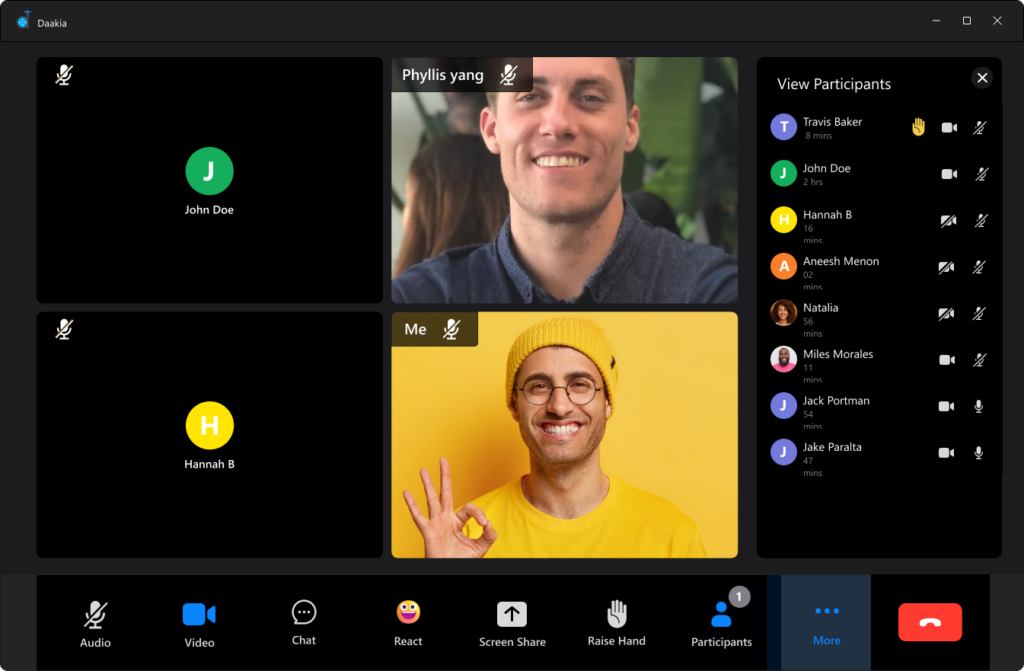
Daakia is an affordable virtual meeting platform that prioritizes security and AI-enhanced collaboration.
Key Features:
- AI-driven engagement tools
- Low-latency, high-quality streaming
- Advanced security and encryption
- Cost-effective with optimized data recording
- Multilingual transcripts for global teams
- Whiteboard and breakout rooms for interactive discussions
- Pricing: Starts at ₹699/month.
- Best For: Businesses looking for an AI-powered and secure video conferencing solution.
Pricing: Starts at ₹699/month.
Best For: Businesses looking for an AI-powered and secure video conferencing solution.
2. Zoom – User-Friendly & Feature-Rich
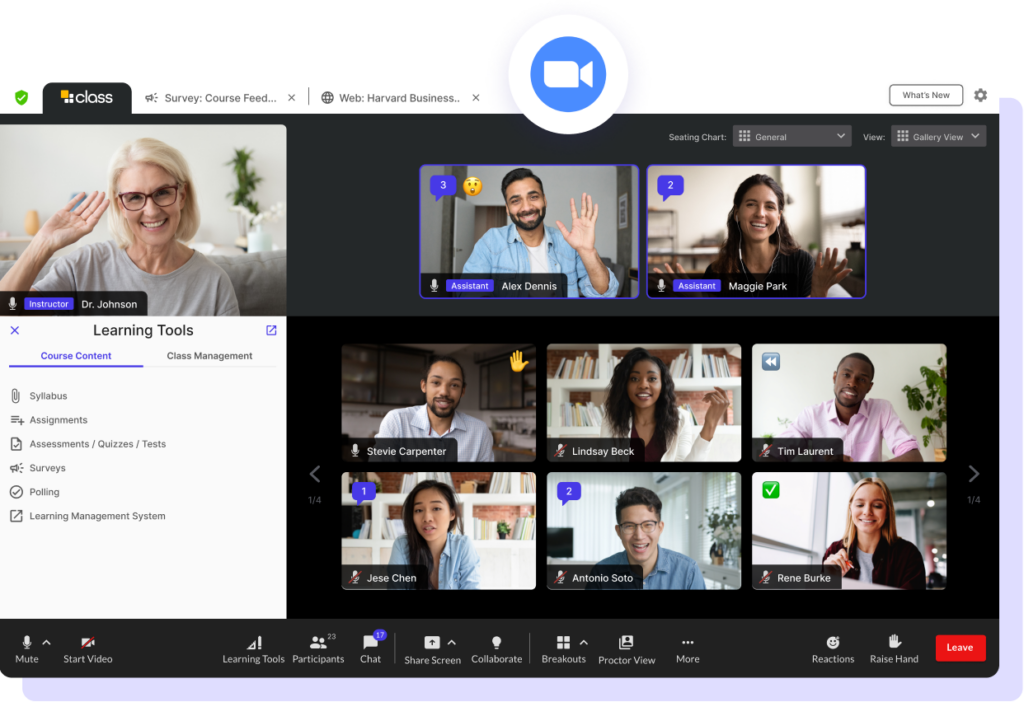
Zoom remains a favorite among small businesses due to its ease of use and comprehensive feature set.
Key Features:
- High-quality video and audio conferencing
- Breakout rooms and screen sharing
- AI-generated meeting transcripts
- End-to-end encryption for secure calls
Pricing: Free version available; paid plans start at $14.99/month.
Best For: Small businesses needing a reliable and intuitive platform.
3. Microsoft Teams – Ideal for Microsoft 365 Users
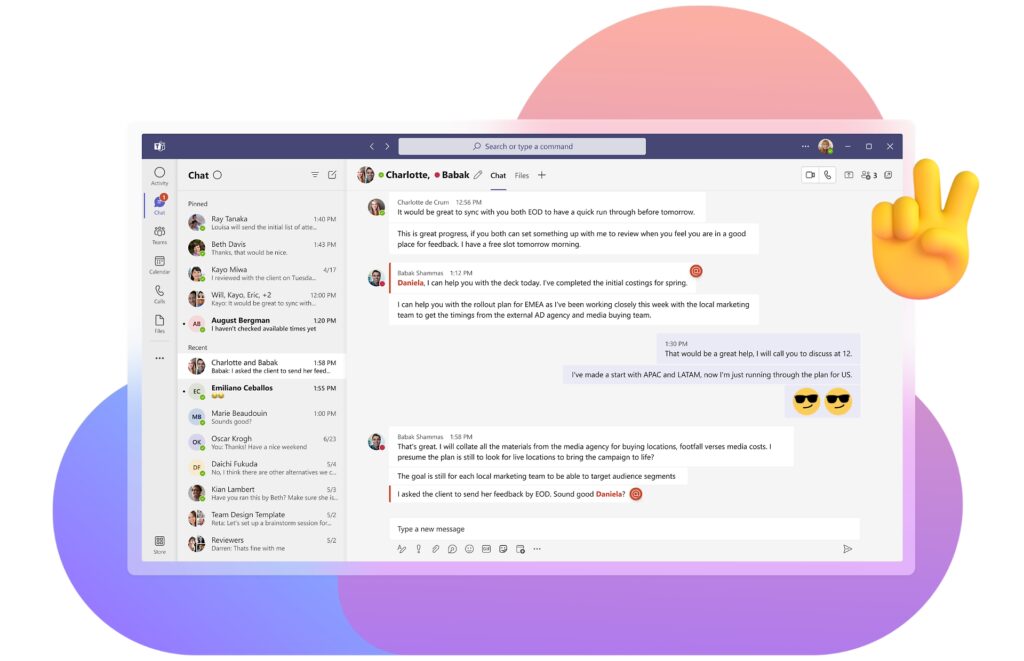
For businesses using Microsoft 365, Teams offers seamless integration with Office tools.
Key Features:
- Built-in chat, document sharing, and task management
- AI-driven noise suppression
- Enterprise-grade security and compliance
- Supports meetings with up to 10,000 participants
Pricing: Free plan available; paid plans start at $4.00/month per user.
Best For: Businesses that rely on Microsoft 365 for collaboration.
4. Google Meet – Affordable & User-Friendly
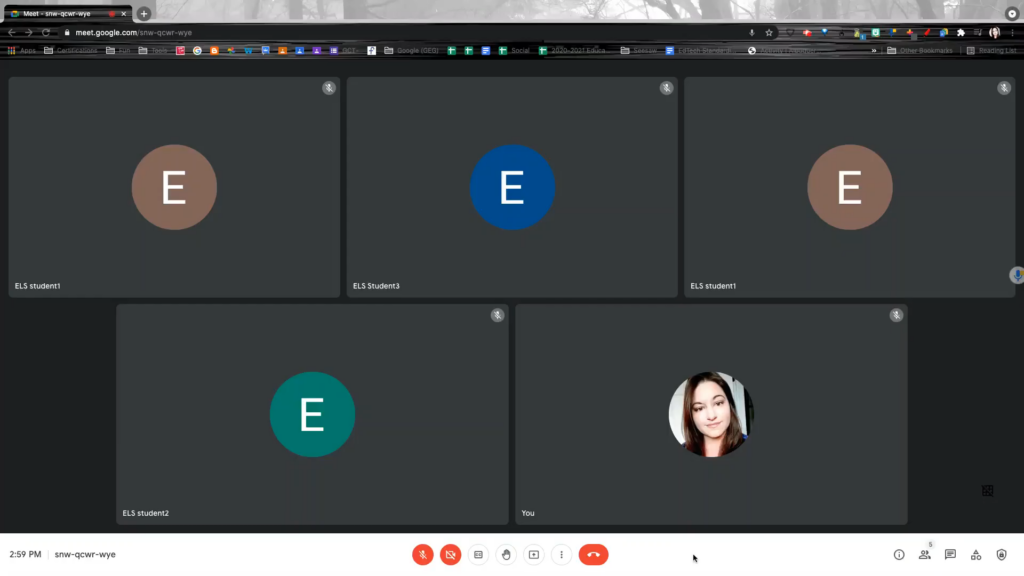
Google Meet is an affordable virtual meeting platform with a simple interface.
Key Features:
- Direct integration with Gmail and Google Calendar
- AI-powered automatic captions
- Secure, encrypted meetings
Pricing: Free for up to 60 minutes; paid plans start at $6.00/month per user.
Best For: Startups and businesses using Google Workspace.
5. Cisco Webex – Secure & Enterprise-Ready
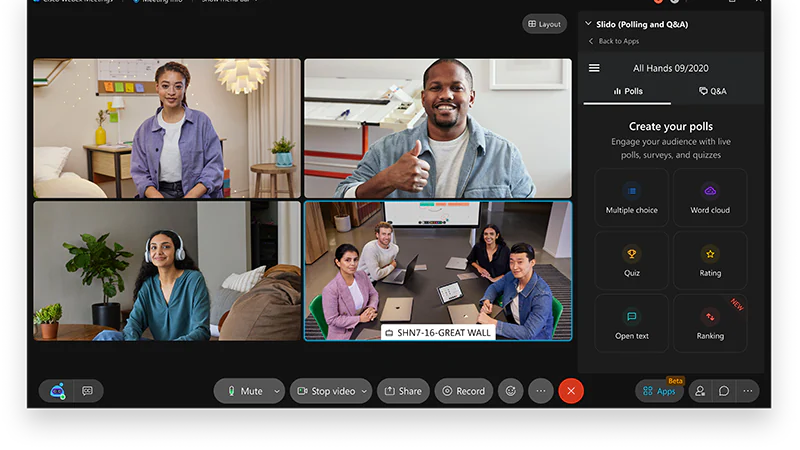
Cisco Webex is perfect for businesses that prioritize security and scalability.
Key Features:
- AI-powered transcription and translation
- Real-time language interpretation
- Advanced file-sharing and whiteboard features
Pricing: Free plan available; paid plans start at $13.50/month per user.
Best For: Businesses needing enterprise-level security.
6. GoTo Meeting – Ideal for Webinars & Client Meetings
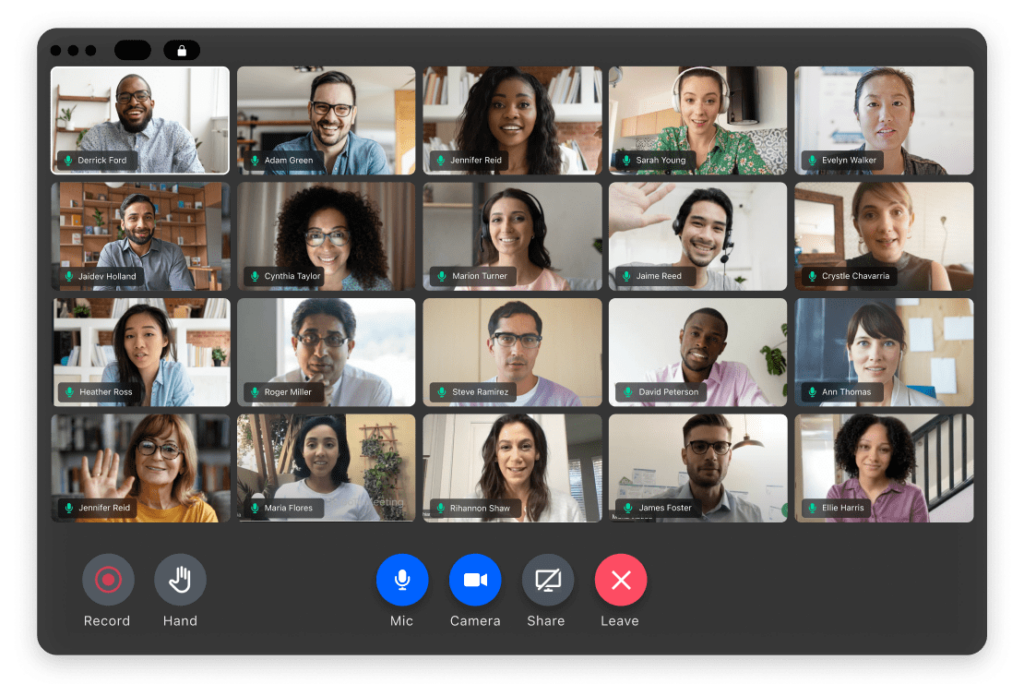
GoTo Meeting is a great choice for businesses conducting regular webinars and training sessions.
Key Features:
- One-click meeting scheduling
- High-quality audio and video
- Interactive presentation tools and cloud recording
Pricing: Starts at $12.00/month per organizer.
Best For: Companies that conduct virtual events and training.
7. Whereby – Simple & Browser-Based
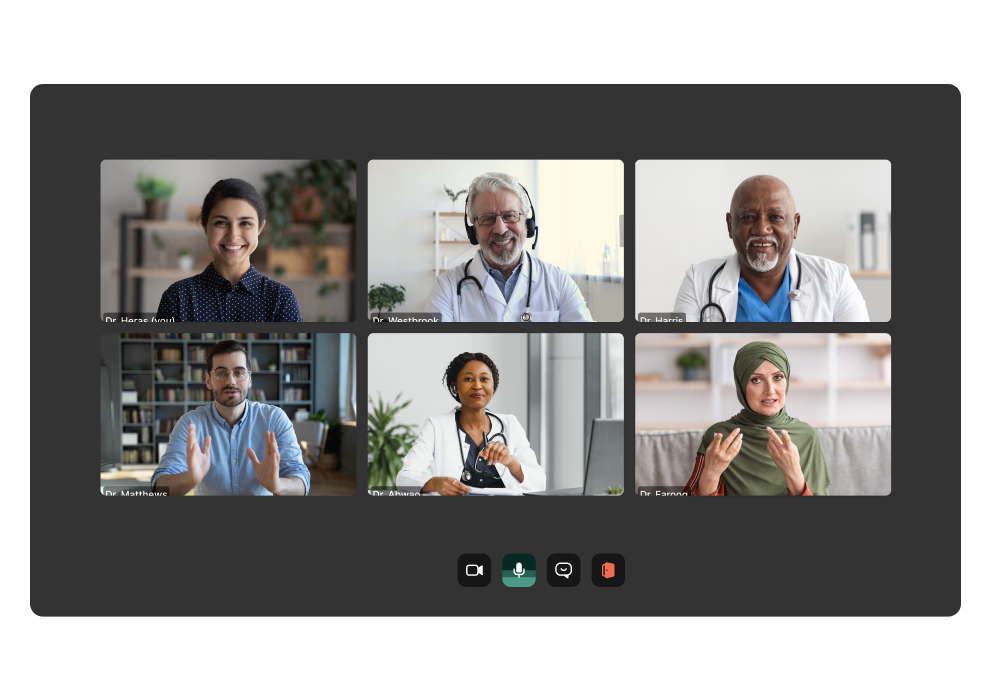
Whereby is a lightweight affordable virtual meeting platform that requires no software installation.
Key Features:
- No downloads – works directly in the browser
- Custom meeting room links for branding
- Integration with tools like Trello and Miro
Pricing: Free for up to four participants; paid plans start at $6.99/month.
Best For: Businesses looking for a hassle-free video conferencing solution.
How to Choose the Best Online Meeting Software for Small Businesses
With so many top video conferencing tools in 2025, how do you choose the best fit? Consider the following factors:
- User-Friendly Design: The platform should offer a seamless and intuitive experience.
- Security Features: Robust protection depends on end-to-end encryption and rigorous compliance checks.
- Affordability: Pick a tool that aligns with your budget.
- Integration: Ensure compatibility with your existing business software.
- Scalability: Select a platform that scales with your business needs.
Conclusion: The Future of Virtual Meetings for Small Businesses
As remote work continues to evolve, selecting the best online meeting software for small businesses is essential for productivity and growth. Whether you prioritize security, affordability, or seamless integration, there’s a platform tailored to your business needs.
By leveraging top video conferencing tools in 2025, small businesses can improve collaboration, enhance communication, and optimize remote work. Choose wisely and empower your team with the right virtual meeting platform!
Frequently Asked Questions
1. How do online conference platforms enhance remote collaboration?
Online conferencing systems facilitate smooth communication with interactive features like breakout rooms, whiteboards, and screen sharing, as well as high-quality audio and video and real-time document sharing. These features improve distant cooperation. These solutions guarantee that teams may collaborate effectively from any location by integrating with cloud-based collaboration tools. Advanced features that enhance productivity and engagement in remote work contexts include multilingual support, AI-powered transcribing, and robust security measures.
2. Are online meeting platforms secure for business use?
In order to guarantee secure corporate communication, the majority of online meeting platforms are built with strong security measures. To stop unwanted access, they provide multi-factor authentication, end-to-end encryption, password-protected meetings, and AI-powered threat detection. Businesses may further improve data protection and make virtual meetings safe by selecting a platform with robust compliance requirements and frequent security upgrades.
3. Can online conference platforms host large meetings?
It is possible to have huge meetings using online conferencing platforms , several of them can accommodate hundreds or even thousands of attendees. Cloud-based scalability, audience engagement tools, breakout rooms, and webinar modes are examples of advanced features that guarantee seamless interactions. Selecting a platform with robust security features and excellent streaming quality contributes to preserving dependability and efficiency for sizable virtual events.
Education has transformed significantly in recent years, adapting to a new era of learning. Once a supplement to in-person instruction, virtual education is now mainstream. As a result, classrooms are embracing new tools, including video conferencing for lessons, small-group discussions, one-on-one tutorials, and conference call services. Among these, Daakia stands out as a secure and efficient Video meeting platform for online learning.
Daakia’s Unique Solutions for Modern Education
Daakia offers cutting-edge technologies designed to meet educational demands, going beyond conventional video conferencing. It improves the virtual learning environment for both teachers and students by emphasizing security, teamwork, and smooth integration.
1. High-Quality Video and Audio for Seamless Learning
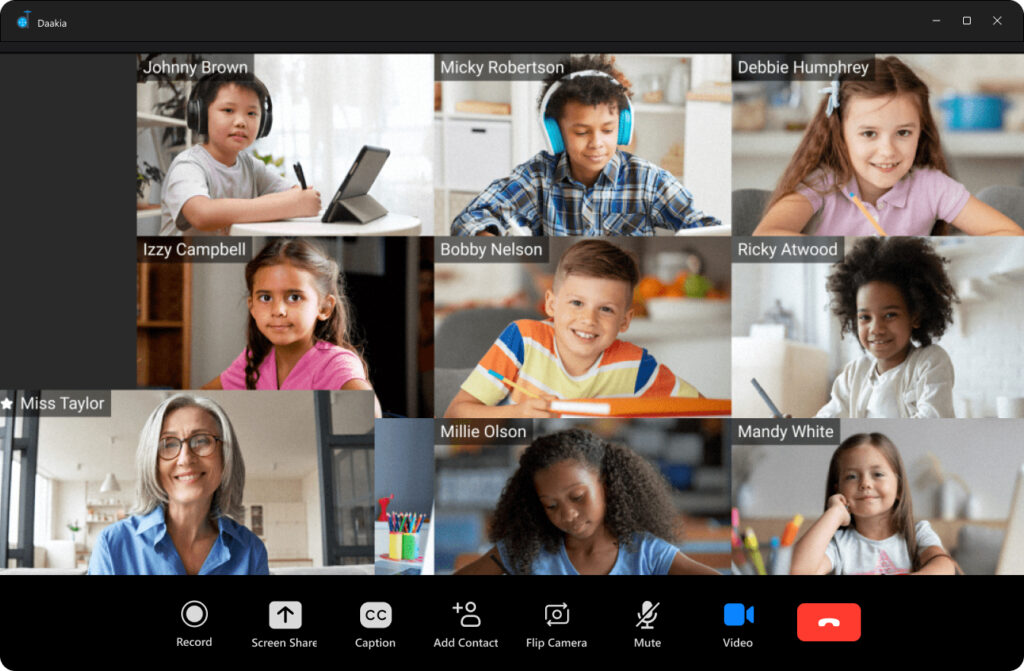
Clear communication is key to effective education. Daakia provides high-definition video and crystal-clear audio, ensuring students and educators can interact without disruptions. Adaptive streaming technology ensures a smooth experience even in low-bandwidth conditions.
2. Breakout Rooms

Daakia provides a virtual or physical space within a larger classroom setting where a smaller group of students can separate to engage in focused discussions, collaborative activities, or specific learning tasks.
3. LMS Integration for Streamlined Learning
Daakia seamlessly connects with top Learning Management Systems (LMS), making online education more efficient and organized. By integrating with LMS platforms, Daakia allows educators to easily schedule classes, share learning materials, and record lectures—all within a single interface. This eliminates the need for multiple tools, streamlining the teaching process and improving accessibility for students.
With this integration, students can access course materials, join live sessions, and review recorded lectures without switching between different platforms. Educators benefit from automated workflows, reduced administrative tasks, and a more structured Video meeting platform.
4. Interactive Learning Features

Daakia supports various engagement tools like virtual whiteboards, polls, quizzes, and AI-powered transcriptions make online learning more interactive and effective.
- AI-Powered Transcriptions automatically convert spoken lectures into text, helping students review lessons easily and ensuring accessibility for those who may need transcripts.
- Virtual Whiteboards allow teachers and students to draw, write, and brainstorm ideas in real time, just like in a physical classroom.
- Polls and Quizzes keep students engaged by allowing instructors to ask quick questions, test understanding, and receive instant feedback.
5. Secure Cloud Storage and Recording
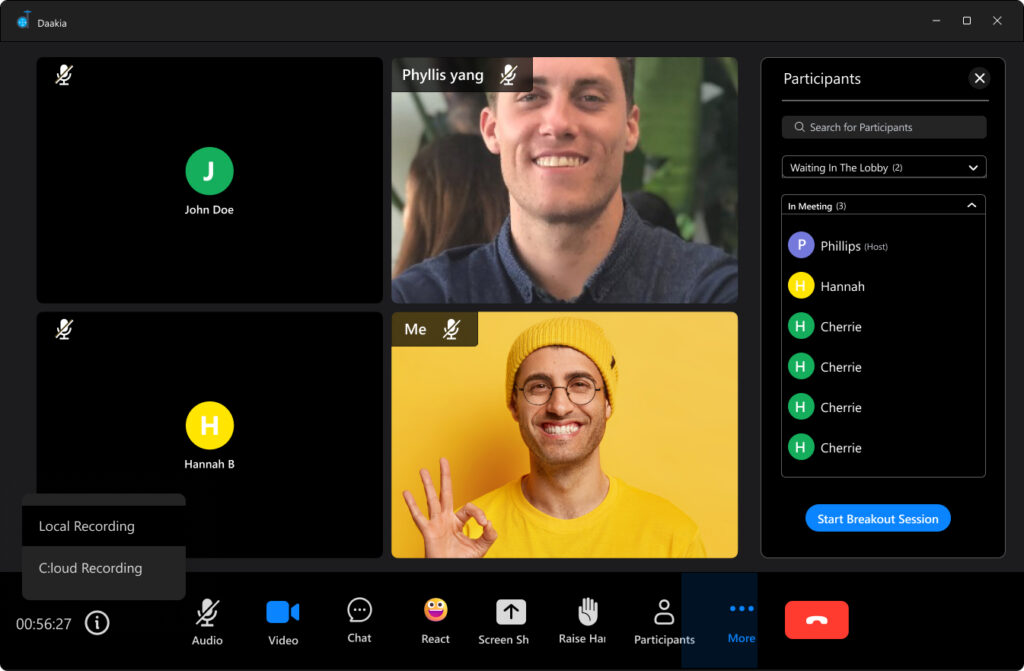
Daakia offers encrypted cloud storage, allowing students and educators to securely save and revisit past lectures while maintaining data confidence. Video meeting platform are essential for modern education, offering flexibility, interaction, and security. Daakia ensures a seamless and secure virtual learning experience for educators and students.
Conclusion:
Platforms for video meetings, which provide flexibility, engagement, and security, are crucial for contemporary education. Daakia offers top-notch video, interactive resources, and strong security features to guarantee a smooth and safe online learning environment for teachers and students. Daakia continues to lead the way in the expansion of online education by providing educators and learners with cutting-edge tools that improve online learning.
Are you ready to transform your educational experience with Daakia? Explore its powerful features and take online learning to the next level today!
Frequently Asked Questions:
- How is video conferencing helpful in education?
Video conferencing is very helpful in education since it allows students and teachers to engage, collaborate in real time, and study remotely. Expert guest lectures are made possible, virtual classes are supported, high-quality education is accessible from any location, and multimedia tools are used to increase student involvement. Furthermore, it facilitates distant learning and offers educators and students flexibility.
- How will video conferencing promote innovation?
By facilitating smooth teamwork, idea exchange, and brainstorming across geographical boundaries, video conferencing fosters creativity. It improves remote teamwork, provides access to worldwide expertise, and encourages innovative problem-solving through real-time conversations. It also facilitates online workshops, hackathons, and knowledge sharing, which spurs innovation across a range of sectors.
- How can Daakia’s solutions benefit teachers and students?
Teachers and students gain from Daakia’s solutions because they offer a seamless and safe virtual learning environment. Teachers may run interesting online courses while protecting student privacy with features like secure file sharing, interactive video conferencing, and end-to-end encryption. Students gain flexible access to lessons, real-time collaboration tools, and a user-friendly interface that enhances learning experiences.
Virtual meetings are no longer just a convenience; they have become essential for small businesses to maintain effective communication with partners, teams, and customers. However, selecting the best virtual meeting software for small business requires careful consideration, especially when it comes to security, privacy risks, and data protection. Ensuring high video quality is only one aspect—businesses must also safeguard sensitive information while maintaining seamless communication.
Why Security Matters in Online Meetings
As remote work gains popularity, cyber threats targeting virtual meetings are increasing. Small businesses, often lacking enterprise-level cybersecurity defenses, are particularly vulnerable. A single security breach can lead to financial data leaks, compromised client information, and reputational damage.

Here’s why prioritizing security in top video conferencing tools 2025 is crucial:
- Confidentiality: Business discussions involving contracts, financials, and strategies must remain private.
- Unauthorized Access: Weak security can allow hackers or uninvited attendees to join meetings.
- Compliance with Data Protection Laws: Businesses must follow regulations such as GDPR, HIPAA, and CCPA when handling customer or employee data.
Essential Security Features in High-Quality Video Conferencing Platforms
When selecting affordable virtual meeting platforms, ensure they include the following security features:
1. End-to-End Encryption (E2EE)
End-to-end encryption ensures that only meeting participants can access shared data, preventing unauthorized interception.
2. Access Controls & Secure Meeting Links
Strong access controls prevent unauthorized entry. Essential security features include:
- Password-protected meetings
- Multi-factor authentication (MFA)
- Waiting rooms for host approval
3. Compliance with Privacy Regulations
A secure video conferencing platform should adhere to major data privacy laws, including:
- GDPR (European data protection regulations)
- HIPAA (for healthcare organizations in the US)
- CCPA (California consumer data protection laws)
4. Secure Cloud Storage & Recording Permissions
Meeting recordings should be securely stored with restricted access. Look for:
- Encrypted cloud storage
- Role-based access to recordings
- Auto-deletion options for sensitive data
5. AI-Powered Security Monitoring
Advanced top video conferencing tools 2025 integrate AI to detect security threats in real-time. Features include:
- AI-driven threat detection
- Behavioral analytics to identify suspicious activity
- Automated security alerts
Best Virtual Meeting Software for Small Business
Here are some of the most affordable virtual meeting platforms with strong security features:
1. Daakia: AI-Driven Security & Privacy
- Zero-trust architecture for enhanced security
- Multi-layer authentication and advanced encryption
- AI-powered threat detection
- Best for: Businesses requiring high-level privacy controls
2. Zoom: User-Friendly with Strong Security
- End-to-end encryption and customizable security settings
- Role-based user access and waiting rooms
- Compliance with SOC 2, GDPR, and HIPAA
- Best for: Small businesses needing a balance between security and ease of use
3. Microsoft Teams: Enterprise-Level Security
- Multi-layer encryption with data loss prevention (DLP)
- Microsoft Defender integration for enhanced security
- Compliance with HIPAA, GDPR, and ISO 27001
- Best for: Businesses using Microsoft 365 looking for seamless security integration
4. Google Meet: Secure & Easy to Use
- AI-powered security for threat detection
- End-to-end encryption with anti-hacking measures
- Compliance with SOC 2 and ISO 27001
- Best for: Businesses needing an affordable, secure video call solution integrated with Google
5. Cisco Webex: High-Security for Sensitive Meetings
- Government-grade encryption and multi-layer security
- Real-time cybersecurity threat detection
- Compliance with FedRAMP, GDPR, and FIPS 140-2
- Best for: Businesses requiring maximum security for confidential meetings
Security Best Practices for Small Businesses
Even with the most secure top video conferencing tools 2025, businesses should implement additional security measures:
- Use unique meeting IDs and passwords
- Enable waiting rooms for participant verification
- Restrict screen sharing and file-sharing permissions
- Regularly update meeting software
- Educate employees about cybersecurity risks
The Future of Secure Online Meetings
As cyber threats evolve, the future of affordable virtual meeting platforms will focus on advanced security technologies such as:
- AI-powered breach detection for instant security alerts
- Biometric authentication for secure participant verification
- Blockchain-based encryption for enhanced data protection
- Decentralized meeting platforms to eliminate single points of failure
Conclusion: Choosing the Right Secure Video Conferencing Software
Selecting the best Video Conferencing for small business isn’t just about convenience—it’s about ensuring secure communication and data protection. Leading platforms such as Zoom, Microsoft Teams, Google Meet, Daakia, and Cisco Webex provide multiple security layers to suit different business needs.

By following a security and privacy checklist, training employees, and using a secure video conferencing solution, businesses can safeguard their virtual meetings and maintain the integrity of their data.
Frequently Asked Questions:
- What is an Virtual meeting platform?
A virtual meeting platform is an online tool that lets people and groups connect, talk, and work together in real time, no matter where they are. In order to improve productivity, it provides capabilities including chat, screen sharing, video conferencing, real-time document collaboration, and AI-powered tools. In order to provide smooth and safe digital interactions, these platforms are crucial for webinars, online training, remote work, and hybrid teams.
Virtual meetings become more productive and interesting with the help of platforms like Daakia, which offer a safe, excellent, and user-friendly environment.
- How can Virtual meeting software improve communication in small businesses?
By facilitating smooth file sharing, effective team coordination, and real-time collaboration, virtual meeting software improves communication. With capabilities like screen sharing, noise reduction, and AI-powered transcriptions, it lowers travel expenses, enhances decision-making, and increases productivity. Small firms find it easy to collaborate thanks to tools like Daakia, which provide safe, excellent virtual meetings.
- How can small firms use virtual meeting software while maintaining privacy?
Businesses should implement waiting rooms, limit screen sharing, employ password-protected meetings, and update software often to avoid vulnerabilities in order to preserve privacy. Confidential chats are safeguarded by using a platform like Daakia that has stringent data standards and secure cloud storage.




